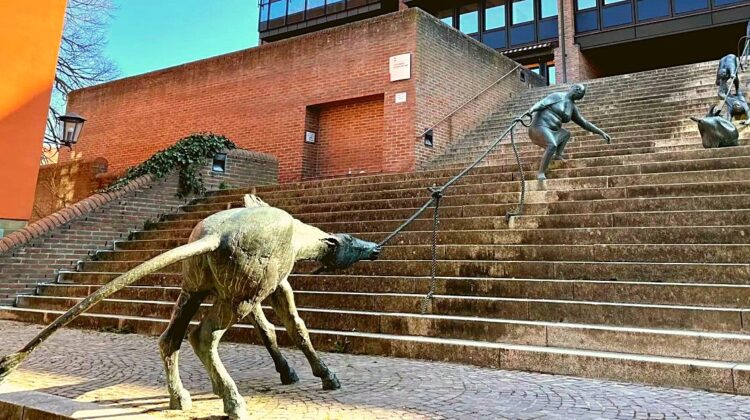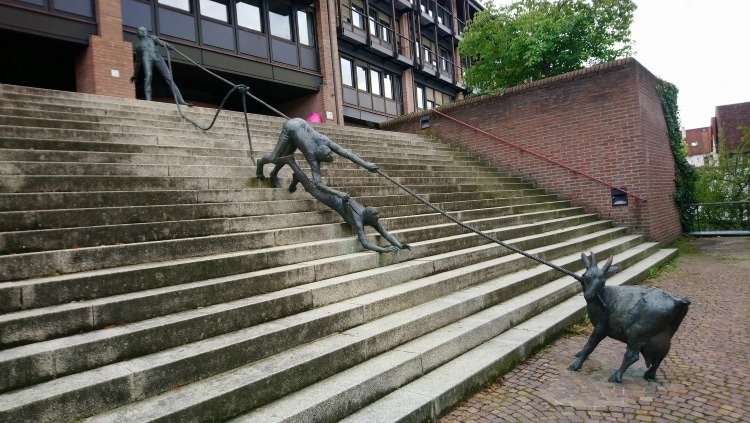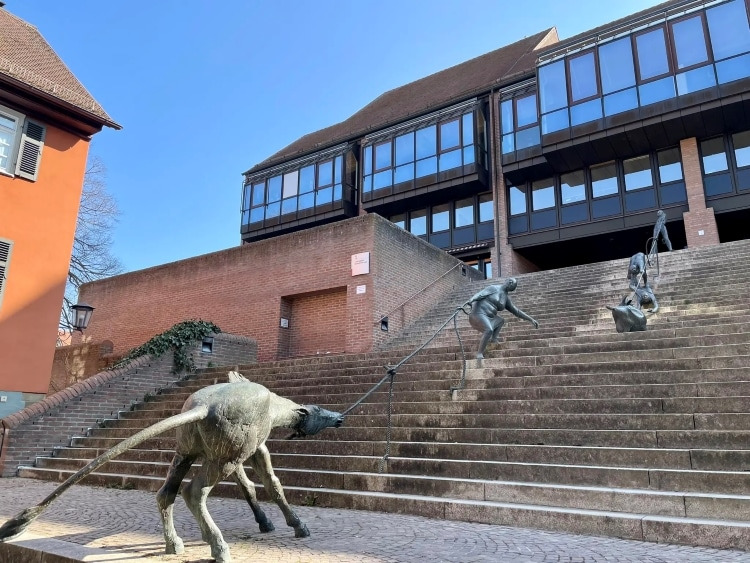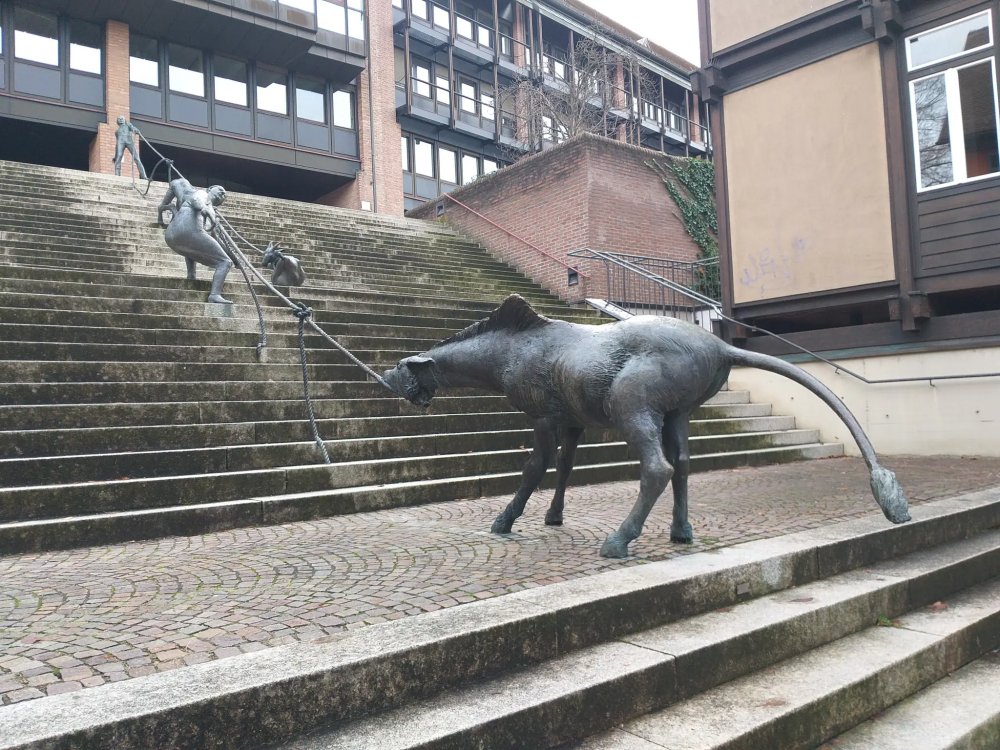
In the realm of public art, an enchanting fusion of aesthetics and utility often takes center stage, capturing the imagination of passersby and enriching their interactions with the surrounding environment. This synergy of creativity and functionality is masterfully epitomized by the ingenious work of German sculptor and draftsperson, Karl-Henning Seemann. His sculptural masterpiece not only tells a captivating tale but also serves as an essential handrail, guiding visitors up a steep flight of stairs in a harmonious blend of form and purpose.

The sculpture, an untitled marvel installed in 1981, finds its home in the heart of the German district of Schwäbisch Hall. Situated outside the district administration office, it stands as a testament to Seemann’s skillful craftsmanship and his profound understanding of kinetic artistry. The artwork is a visual symphony that depicts life-sized figures engaged in an arduous endeavor—struggling to pull obstinate animals up a metaphorical mountain using sturdy ropes.
The sculpture unfolds in two distinct acts, seamlessly merging artistic expression with practical utility. At the base of the stairs, a scene of defiance and determination unfolds before the viewer’s eyes. A bronze rope connects a recalcitrant horse, its hooves firmly grounded, and a woman exerting her strength at the opposite end. The tableau is a frozen instant, capturing the essence of an uphill struggle.

As one ascends the stairs, the drama continues to unfold, adding depth and dimension to the narrative. At the summit, the stage is set for an even grander spectacle. Three resolute men unite their efforts, laboring to hoist a goat aloft the metaphorical summit. The scene is a cascade of movement and emotion frozen in time, each figure a testament to Seemann’s unique ability to breathe life into his creations.
Seemann’s sculptural prowess extends beyond mere representation; it delves into the realm of transformation and functionality. The sculpture seamlessly integrates into the architectural landscape, its essence harmonizing with the practical needs of the environment. This synthesis of aesthetics and purpose aligns with Seemann’s artistic philosophy—a quest to translate movement, the fourth dimension of time, into the medium of sculpture while preserving its connection to gravity.

The captivating sculpture’s location is serendipitous, adjacent to a set of steep stairs known locally as the Kleine Treppe (small stairs). These stairs, unlike their grander counterpart—the Große Treppe (large stairs) leading to the city’s marketplace—are used seasonally as an open-air theater stage, with the smaller steps dedicated to children’s performances.
Seemann’s artistry, marked by its captivating dynamism and arresting realism, transcends the boundaries of static representation. His sculptures are living narratives, vividly recounting stories through figures captured in motion, encapsulating a fusion of energy and stillness, dynamism and stability. Each piece is a harmonious amalgamation of contrasts, a synthesis that embodies the paradox of artistry—the marriage of the ephemeral and the eternal.

As you traverse these remarkable stairs, guided by Seemann’s magnum opus, you’re not merely ascending a physical incline; you’re embarking on a journey through time and space, a journey shaped by the hands of a master sculptor. The staircase itself becomes a stage, and Seemann’s creation, a cast of characters forever engaged in their captivating performance. In every step you take, you’re not only navigating an architectural feature; you’re becoming a part of the living artistry that seamlessly weaves into the fabric of Schwäbisch Hall’s rich cultural tapestry.

Leave a Reply